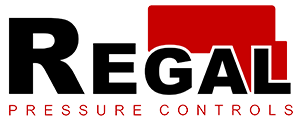Introduction: In industrial and engineering contexts, the safety of equipment, pipelines, and systems is paramount. One crucial element that ensures this safety is the proper functioning of safety valve pressure mechanisms. These valves act as guardians, preventing potentially catastrophic situations by releasing excess pressure in a controlled manner. In this article, we delve into the significance, working principles, types, and importance of safety valve pressure in various applications.
Significance of Safety Valve Pressure: Safety valve pressure mechanisms serve as essential fail-safe components in systems that involve pressurized gases or liquids. Their primary function is to prevent the build-up of excessive pressure, which could lead to explosions, ruptures, or other dangerous situations. These valves are designed to discharge excess pressure safely, maintaining the integrity of equipment and protecting personnel.
Working Principles: Safety valves operate on the principle of relieving pressure when it exceeds a predetermined set limit. When the pressure inside a vessel or system exceeds the safe operating range, the valve opens, allowing the excess pressure to be released to a safe outlet, typically to the atmosphere. Once the pressure drops to the acceptable range, the valve closes, preventing any further release.
Types of Safety Valves:
- Spring-Loaded Safety Valves: These are the most common type of safety valves. They utilize a spring to maintain a constant force on the valve disc, which keeps it closed. When the pressure exceeds the set limit, the spring force is overcome, and the valve opens.
- Pilot-Operated Safety Valves: These valves utilize a pilot valve to control the main valve’s opening. The pilot senses the system pressure and, when it exceeds the set limit, triggers the opening of the main valve.
- Pressure Relief Valves: These valves are similar to safety valves but may have different design specifications. They are designed to open gradually and relieve excess pressure before it reaches dangerous levels.
Importance and Applications: Safety valve pressure mechanisms are vital in a wide range of applications, including:
- Steam Boilers: Preventing overpressure in boilers is crucial to avoid explosions. Safety valves release excess steam, maintaining safe operating conditions.
- Pressure Vessels: Containers that hold pressurized gases or liquids, such as tanks or pipelines, rely on safety valves to prevent catastrophic ruptures.
- Chemical Processing: In chemical plants, safety valves protect equipment and personnel from the risks associated with pressurized chemicals.
- Oil and Gas Industry: Safety valves are essential in oil refineries and gas processing plants to ensure safe pressure levels in pipelines and equipment.
Benefits and Importance:
- Personnel Safety: The primary function of safety valves is to protect personnel from the dangers of excessive pressure-related accidents.
- Asset Protection: Safety valves prevent damage to expensive equipment and infrastructure by releasing pressure before critical limits are reached.
- Legal and Regulatory Compliance: Many industries are subject to strict regulations that mandate the use of safety valves to ensure safe operation.
Conclusion: Safety valve pressure mechanisms are critical safeguards in various industries where pressurized systems are prevalent. By automatically releasing excess pressure in a controlled manner, these valves prevent catastrophic accidents, protect valuable assets, and uphold the safety of personnel. Their importance cannot be overstated, as they stand as the last line of defense against the potentially devastating consequences of overpressure situations.
